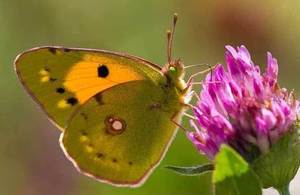Nature Improvement Areas are boosting wildlife, communities and economy
Report shows Nature Improvement Areas are boosting the economy and protecting wildlife

Wildlife, communities and local economies are reaping the benefits of England’s new Nature Improvement Areas, according to a report published today.
Nature Improvement Areas (NIAs) set up by the government in 2012 have helped farmers to access EU grants, made valuable contributions towards university research and boosted the £210 billion rural economy.
They’ve also attracted outside investment – more than £730,000 from business partners and £7.8 million from NGOs and not-for-profit organisations.
Environment Secretary Elizabeth Truss said:
A healthy environment and a healthy economy go hand in hand. These Nature Improvement Areas show how protecting our precious wildlife and outstanding landscapes can help grow our £30 billion rural tourism industry and create more jobs for hardworking people as part of our long term economic plan.
Almost 19,000 hectares of threatened habitat - equivalent to 23,000 football pitches - have been created or restored since the NIAs were set up with £7.5 million of government funding.
Volunteers have spent 24,300 days - or 66 years in total - surveying wildlife and improving habitats, and more than 11,000 people have taken part in educational visits.
The 12 NIAs are spread throughout the country, from glistening sands of Morecambe Bay to the butterfly-filled South Downs in Hampshire.
These wild habitats are now bigger, better connected, and more widespread, enabling wildlife such as butterflies and water voles to thrive.
NIAs were first announced in the Natural Environment White Paper, the first government White Paper on the environment for 20 years, with the aim of creating 12 initial areas to reconnect nature on a significant scale through local partnerships.
The NIA partnerships have improved access to the countryside, creating new public footpaths and connecting a network of paths which will span 540km by 2015.
The NIA partnerships are on track to restore, create, enhance and maintain a further 5,500 hectares by 2015, joining up people and communities with their landscapes.